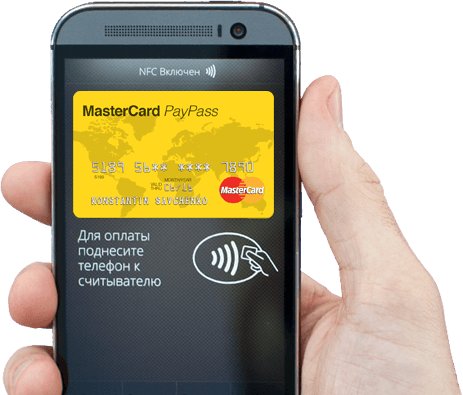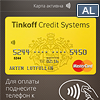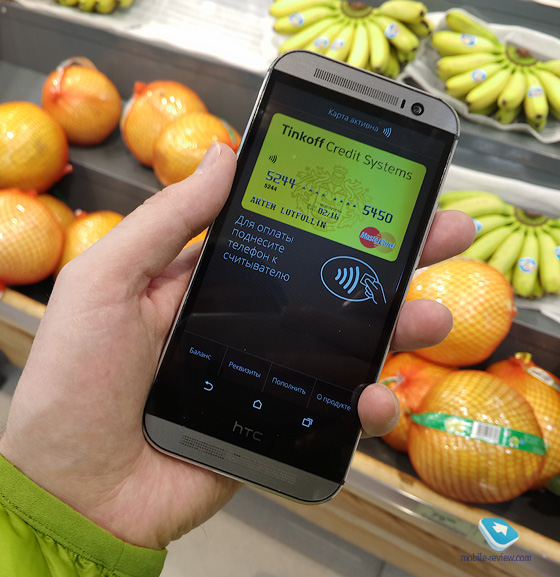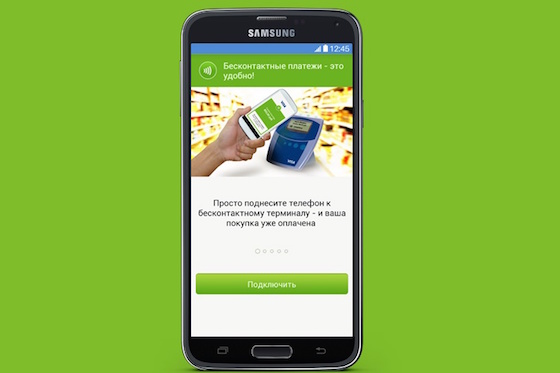The other day I ran into a very inconvenient situation when trying to withdraw the balance of my funds on the account of the 'Wallet' service, and decided to share its details with you.

First, briefly about the service itself. Cardsmobile provide users with the ability to pay for purchases using their smartphone that supports this feature. Previously, the list of devices was relatively small due to the need for SE (Secure Element), but later another technology was taken as a basis, so now almost any smartphone with NFC is suitable for payment.
 Smartphone as a replacement for a bank card using the example of devices HTC and the 'Wallet' application
Smartphone as a replacement for a bank card using the example of devices HTC and the 'Wallet' application
To pay you they issue a virtual card of one of several banks, initially it was only Tinkoff Bank, now Russian Standard Bank has joined it. I issued a card from Tinkoff.

Some time ago, I enjoyed using the 'Wallet' application from Cardsmobile on smartphones HTC, they had very interesting promotions, for example, to make 10 purchases for a total of 1,000 rubles or more and get a bonus thousand to the account . Is that great? Of course!
But now the 'Wallet' has become a less interesting product, as banks have their own native applications with the same functionality, so they don't need an intermediary (the same Tinkoff, 'Kukuruza', MTS Bank, the latter, however, have a slightly different technology) . Yes, and it is more profitable for me to pay directly from my Tinkoff debit / credit card, to which their own mobile bank is tied, rather than through a third-party 'Wallet', which does not even have a cashback now.

So, recently I replenished one of my electronic wallets and, having made a mistake with the template, sent 200 rubles to the account of the card issued to the 'Wallet'. Having complained in support of Tinkoff Bank, I found out that, it turns out, I had 571 rubles there, and decided to spend it, why are they lying around there!
I registered in 'Wallet' on a new smartphone, issued a new card and expected to see the same 571 rubles on it. It was logical and obvious to me that the application would simply issue a new card tied to my old account, but it didn't work! It turned out that the old card was recorded on the Secure Element and can only be reissued on the same smartphone (which I returned after a long time ago after the test).
“Okay, I can't withdraw this money, let technical support help,” I thought. Tinkoff Bank sent me to Cardsmobile, and they replied that the money can be returned by terminating the agreement with the bank. And now let's move on to the most interesting part: in addition to standard passport scans and an application for termination, you need to provide the bank with a notarized copy of the agreement with the operator. This needs to be done due to the fact that I was using an unidentified 'Wallet'. The most offensive thing, I remember that I went through the identification procedure a couple of years ago, when the service was just starting! But, apparently, the 'Wallet' on each new smartphone has to be re-identified. So, the problem with the copy of the contract is that the notaries refuse to certify it without the operator's representatives, and in the communication salon you will only be given a piece of paper with a seal. And why should I go and spend more money on a notary than the balance on the card?
After looking for people with similar problems, I found out that QIWI Bank acts in the same cunning way when trying to withdraw money from its wallets. They simply block your wallet, and then they require this notarized copy of the contract with the operator, which, in fact, cannot be obtained.
By the way, this is not my first card reissue with the restoration of balance. Previously, to transfer the balance, it was enough to write to the technical support with the name, date of birth and phone number, after a few days the money successfully appeared. Now the problem, apparently, is in the same Secure Element, on which the previously recorded card lay.
In any case, as an end client, such nuances should not bother me, because it is supposed to be a simple operation – transfer money from my wallet to the account of my Tinkoff Black card or top up the balance of my mobile phone. But at the same time, a bunch of unnecessary gestures is required from me, it seems that the calculation goes to the banal laziness of users to tinker with the rest.
In fact, the problem turns out to be much deeper. The creators of the 'Wallet' had to create one single bank account and then tie all subsequent cards to it. The phone number and SMS code could be used as authorization. Instead, with each new smartphone, they open a new contract, and then the fuss with the transfer of money begins, can you imagine how inconvenient it is? Later on Twitter I was told that such a procedure is not provided by the bank itself.
I was frankly disappointed with such an ill-conceived system with the withdrawal of money and the re-issue of cards, so I do not recommend that you use this service for contactless payments. Want to try paying with your phone? Better get 'Kukuruza', it has enough other useful functions.
Fortunately, today the technical support of Tinkoff Bank said that you can provide them with an ordinary copy of the contract with a seal, and send all documents remotely, but if it was a question of another bank, then you would most likely be sent for a notarized copy, keep this in mind.
In conclusion, I repeat once again: I do not recommend using any electronic money to pay for anything, only full-fledged bank cards. That is, how, of course, you can tie a bank card to some Yandex.Money, but I do not recommend storing money on the YAD, QIWI and other services wallet itself.
